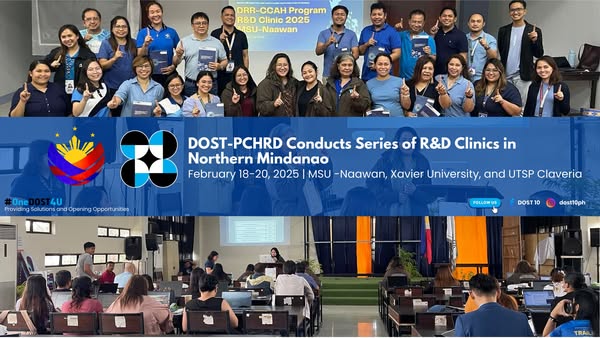In view of the need to keep the public abreast with accurate and relevant information, the Department of Health wishes to provide the public with right information about the COVID-2019:
1. What are coronaviruses?
Coronaviruses are a large family of viruses causing a range of illnesses, from the common cold to more serious infections such as those caused by Middle East Respiratory Syndrome-related Coronavirus (MERS-CoV) and Severe Acute Respiratory Syndrome-related Coronavirus (SARS-CoV). Coronavirus can also cause a variety of diseases in farm animals and domesticated pets.
2. What are the symptoms and possible complications of a coronavirus infection?
Common signs of coronavirus infection include flu-like and respiratory symptoms, fever, cough, shortness of breath, and breathing difficulties. In severe cases, it can cause pneumonia, acute respiratory syndrome, kidney failure, and even death.
3. Where did the novel coronavirus (COVID-2019) originate?
On 31 December 2019, a clustering of pneumonia cases of unknown etiology was reported in Wuhan, China. The outbreak was later determined to be caused by a novel coronavirus (COVID-2019), a new coronavirus strain that has not been previously identified in humans.
4. How is the 2019-nCoV transmitted?
On January 24, 2020, the World Health Organization has confirmed human-to-human transmission largely in Wuhan City, China. However, there is not enough information yet to draw a definitive conclusion about the intensity of human-to-human transmission, full clinical features, and the original source of the outbreak.
Health experts are accelerating research to study the origins of the virus and how it is spreading. The virus has been differentiated from SARS and MERS, but its contagiousness and virulence is still being studied.
5. Is there a treatment and vaccine for the COVID-2019?
There is no specific treatment for any coronavirus including the COVID-2019. However, many of the symptoms can be treated based on the patient’s clinical conditions. Supportive care for infected persons can also be highly effective.
To date, there remains to be no vaccines for the new strain of coronavirus, hence, the existing Pneumococcal Conjugate Vaccines (PCVs) are ineffective against COVID-2019.
6. What should you do if you are experiencing mild flu-like symptoms, but have not traveled to China recently or have not been in close contact with anyone who traveled to China?
In this case, there is no need to be tested for COVID-2019. Please consult at your nearest health facility as deemed necessary.
7. What should hospitals with suspected case/s of theCOVID-2019 do?
The designated infection control committee (ICC) of the hospital shall be responsible for the preliminary investigation of suspected cases. Once the case is classified as a person under investigation (PUI), he/she should be quarantined. The ICC should then notify the DOH Regional Epidemiology and Surveillance Units (RESU), who shall then report to the DOH Epidemiology Bureau.
Hospitals with PUIs in quarantine will also send the collected specimens (oropharyngeal and nasal swabs) to Research Institute of Tropical Medicine (RITM) for screening.
The DOH also encourages health workers to be vigilant and take extra precautionary measures when in contact with patients with acute respiratory infection, especially those with travel history to China.
Finally, all health facilities must enhance their standard infection prevention and control practices, especially in their emergency departments.
8. What can the public do to prevent the spread of COVID-2019?
DOH advises the public to:
- Practice frequent and proper handwashing,
- Practice proper cough etiquette
- Always bring a handkerchief/tissue
- Cover mouth and nose using handkerchief/tissue (sleeves or crook of the elbow may also be used to cover the mouth when coughing or sneezing)
- Move away from people when coughing
- Do not spit
- Throw away used tissues properly
- Always wash your hands after sneezing or coughing
- Use alcohol/sanitizer
- Avoid unprotected contact with farm or wild animals
- Ensure that food is well-cooked
- Maintain a healthy lifestyle to mount up immunity
9. Who should be immediately investigated and tested for the COVID-2019 infection?
The following should be immediately investigated and tested for nCoV:
- A person with severe acute respiratory infection (SARI), fever and cough, and with at least one of the following:
- history of travel to or lived in Wuhan in the 10-14 days prior to symptom onset;
- A health worker who has been working in an environment where patients with severe acute respiratory infections are being cared for, without regard to place of residence or history of travel;
- A person with acute respiratory infection (ARI) and fulfilling at least one of the following criteria within the 14 days prior to onset of illness:
- Close contact with a confirmed or probable case
- visit/work in a live animal market in Wuhan
- Work/attend a health facility where patients with HAI-associated COVID-2019 reported.
10. Are there any travel restrictions to be observed?
There are no travel restrictions recommended as of the moment. Currently, the transmission potential and modes of transmission remain unclear. Hence, we advise those who will travel to affected areas to avoid crowded places, close contact with live or wild animals, and to observe handwashing and cough etiquette. DOH is in close coordination with the WHO and the China Center for Disease Control on developments and updates regarding travel advisories.
11. Where can the public get information about the COVID-2019?
The public can get information about the 2019-nCoV from the DOH’s and WHO’s official press releases, website, and official social media platforms. Please be wary of fake news and reports circulating online, and always verify the sources of your information.
12. What are the DOH and other concerned agencies doing to contain the situation?
The Department of Health is closely monitoring individuals who manifested signs of respiratory infection and had a history of travel to China, and is coordinating with WHO and China Center for Disease Control for updates.
DOH is also enhancing its coronavirus laboratory testing capacity, hospital preparedness, rapid response, and its risk communication and information dissemination. Personal Protective Equipment are made available at the Bureau of Quarantine, Centers for Health Development, and DOH Hospitals.
The Bureau of Quarantine, meanwhile, is working with airlines and airport authorities to strengthen border surveillance, while the Epidemiology Bureau is heightening its community surveillance.
For more updates about the 2019 – nCov, click here.
This advisory is prompted by information received from the Department of Health. All information listed above are generated by the DoH.
Source: http://www.pchrd.dost.gov.ph/index.php/news/6513-faqs-on-novel-coronavirus-2019-ncov








